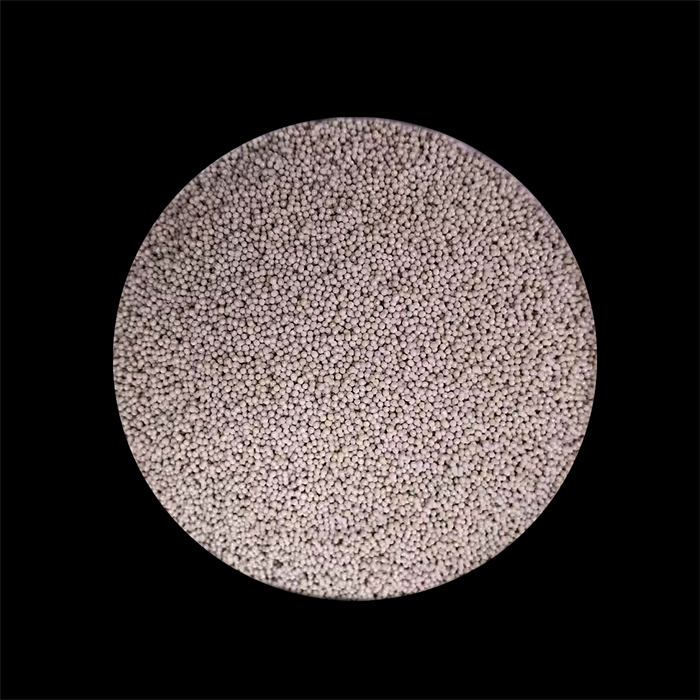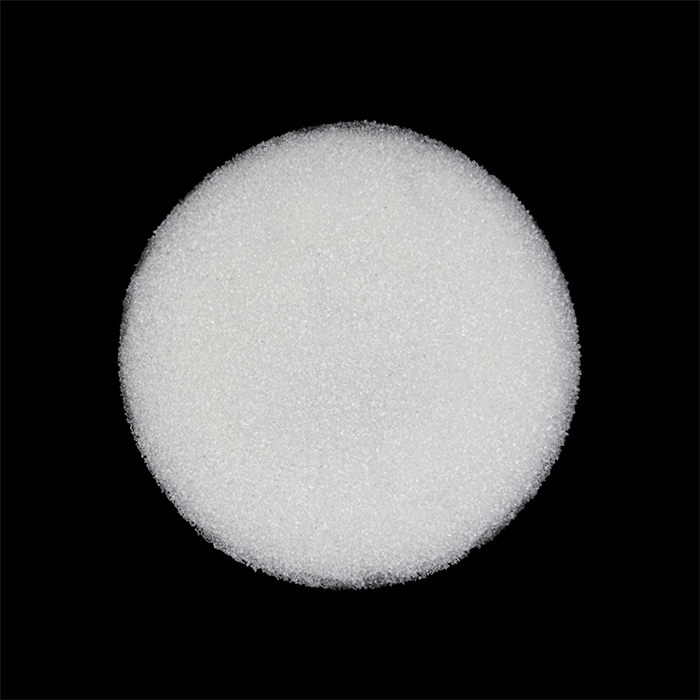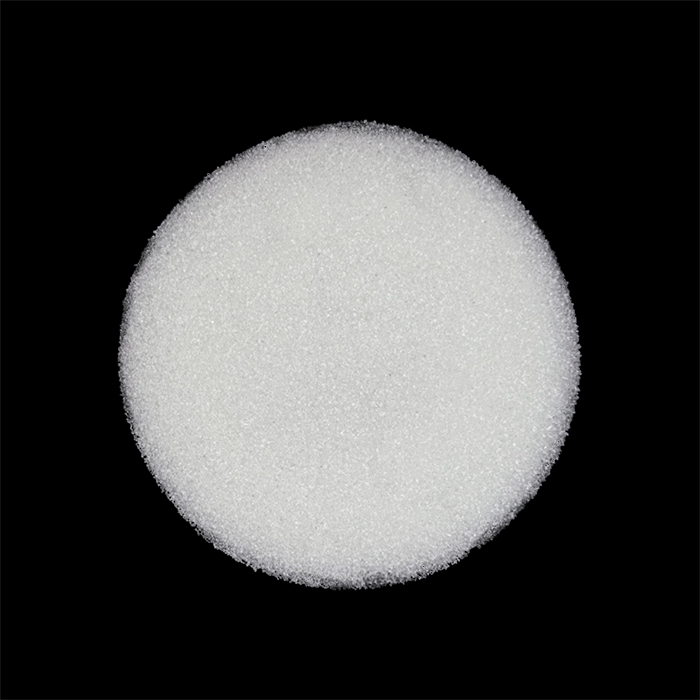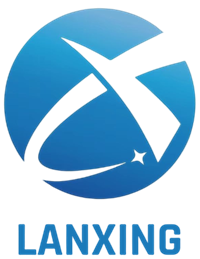Microesferas de vidrio son pequeñas partículas de vidrio esféricas, huecas o sólidas, que se utilizan en aplicaciones industriales, médicas, aeroespaciales, de seguridad vial y cosméticas. Estas microesferas ofrecen propiedades ligeras, de alta resistencia, aislantes y reflectantespor lo que son esenciales para aplicaciones de materiales avanzados.
Con creciente demanda de materiales de alto rendimientoseleccionando el tipo adecuado de microesferas de vidrio de un fabricante de confianza es crucial. Esta guía explora los mejores proveedores, aplicaciones, tendencias de precios y perspectivas del mercado mundial para 2025.
¿Qué son las microesferas de vidrio?
Microesferas de vidrio son pequeñas, esferas de vidrio de precisión que se utilizan en diversas industrias debido a su baja densidad, alta resistencia mecánica y propiedades reflectantes. Estas microesferas varían en tamaño, densidad y composiciónen función de su aplicación prevista.
Principales ventajas de las microesferas de vidrio:
✔ Ligero y muy resistente - Reduce el peso del material manteniendo la durabilidad.
✔ Excelente aislamiento térmico - Se utiliza en revestimientos y compuestos para la resistencia al calor.
✔ Propiedades de alta reflectividad - Ideal para marcas viales, revestimientos reflectantes y señalización.
✔ Resistencia química y a la corrosión - Adecuado para aplicaciones industriales y aeroespaciales.
✔ Distribución homogénea del tamaño de las partículas - Garantiza un rendimiento uniforme en compuestos y revestimientos.
Seleccionando microesferas de vidrio de alta calidadLas industrias pueden mejorar el rendimiento de los productos, reducir costes y aumentar la seguridad.
Los mejores fabricantes y proveedores de Microesferas de vidrio
Elegir un proveedor de confianza de microesferas de vidrio garantiza productos certificados de alto rendimiento que cumplen normas internacionales del sector. Uno de los principales fabricantes es LangFang Lanxing Impex Co., Ltd.
¿Por qué elegir LangFang Lanxing para las microesferas de vidrio?
LangFang Lanxing Impex S.L. es un proveedor de primer nivel especializada en microesferas de vidrio de alta calidad para aplicaciones industriales, aeroespaciales, médicas y de seguridad vial.
Principales ventajas de las microesferas de vidrio LangFang Lanxing:
- Fabricación de alta pureza: Produce microesferas uniformes y diseñadas con precisión.
- Certificado para aplicaciones industriales y de seguridad: Cumple Normas ISO, ASTM y específicas del sector.
- Formulaciones personalizables: Disponible en varios tamaños, densidades y revestimientos.
- Producción respetuosa con el medio ambiente: Utiliza métodos sostenibles de reciclado de vidrio.
- Precios competitivos por volumen: Precios directos de fábrica para grandes pedidos.
Para microesferas de vidrio de alto rendimiento, LangFang Lanxing ofrece soluciones rentables adaptado a materiales industriales avanzados.
Tipos de microesferas de vidrio y aplicaciones
Diferentes tipos de microesferas de vidrio se utilizan en seguridad vial, aeroespacial, materiales compuestos, revestimientos y aplicaciones médicas.
1. Microesferas de vidrio hueco (rellenos de baja densidad)
✔ Ligereza y alta resistencia para materiales compuestos.
✔ Se utiliza en plásticos aeroespaciales, de automoción y ligeros.
✔ Reduce la densidad en pinturas, revestimientos y espumas sintácticas.
2. Microesferas de vidrio sólido (rellenos de alta resistencia)
✔ Microesferas resistentes a los productos químicos, duraderas y de gran dureza.
✔ Se utiliza en revestimientos industriales, acabado de superficies y compuestos poliméricos.
✔ Mejora la resistencia al desgaste y las propiedades mecánicas de los materiales.
3. Microesferas de vidrio reflectantes para señalización vial
✔ Mejora la visibilidad nocturna de las marcas en el pavimento.
✔ Cumple las normas EN 1423, AASHTO M247 y ASTM D1155.
✔ Se utiliza en señales de tráfico reflectantes, pinturas para carreteras y señalización de aeropuertos..
4. Microesferas de vidrio biomédicas y cosméticas
✔ Microesferas biocompatibles utilizadas en sistemas de administración de fármacos.
✔ Se utiliza en cosméticos de primera calidad para obtener una textura suave y difundir la luz.
✔ Microesferas estériles de gran pureza para aplicaciones médicas.
5. Microesferas de vidrio de alto rendimiento para el sector aeroespacial y de defensa
✔ Se utiliza en compuestos aeroespaciales ligeros y de alta resistencia.
✔ Proporciona aislamiento térmico y resistencia a los impactos.
✔ Esencial para aplicaciones militares y materiales de uso espacial.
Elegir el tipo adecuado de microesferas de vidrio garantiza máxima eficacia, durabilidad y rentabilidad.
Tendencias de precios y perspectivas de mercado de las microesferas de vidrio (2025)
En coste de las microesferas de vidrio depende de composición del material, distribución por tamaños y requisitos de aplicación.
Tendencias actuales de los precios (2025)
| Tipo de microesfera de vidrio | Precio medio por tonelada (USD) | Demanda del mercado |
|---|---|---|
| Microesferas huecas de vidrio | 1,500-1,500 - 1,500-3,500 | Alta |
| Microesferas de vidrio sólido | 600-600 - 600-1,800 | Crecer |
| Microesferas de vidrio reflectantes | 700-700 - 700-2,000 | Ampliar |
| Microesferas biomédicas y cosméticas | 2,500-2,500 - 2,500-5,000 | Aumentar |
| Microesferas de vidrio de calidad aeroespacial | 3,000-3,000 - 3,000-6,500 | Estable |
Tendencias del mercado que impulsan el crecimiento
✔ Aumento de la demanda de materiales ligeros - Crecimiento en compuestos aeroespaciales y de automoción.
✔ Ampliación de los proyectos de seguridad vial - Mayor uso de microesferas de vidrio reflectantes.
✔ Aumento de los materiales sostenibles y ecológicos - Preferencia por producción con baja huella de carbono.
En mercado de las microesferas de vidrio se espera que aumentar considerablemente de aquí a 2030impulsado por avances tecnológicos e iniciativas de sostenibilidad.
Guía de compra a granel: ¿Cómo comprar microesferas de vidrio?
Para fabricantes aeroespaciales, empresas de seguridad vial y empresas de revestimientos industrialesCompras microesferas de vidrio a granel requiere cuidadosa selección de proveedores, análisis de costes y planificación logística.
Paso 1: Identifique sus necesidades
- Elija el tipo microesfera de vidrio (hueca, sólida, reflectante, médica o aeroespacial).
- Especifique tamaño de las partículas, densidad y preferencias de recubrimiento.
- Considere precios al por mayor, derechos de importación y logística.
Paso 2: Seleccionar un fabricante fiable
✔ LangFang Lanxing Impex S.L. es un proveedor de confianza de microesferas de vidrio de alta calidad.
✔ Verificar que el fabricante cumple ISO, ASTM y certificaciones industriales.
✔ Solicitud muestras para probar rendimiento, durabilidad y reflectividad.
Paso 3: Solicitar un presupuesto y negociar las condiciones
- Proporcione especificaciones detalladas para un presupuesto exacto.
- Discuta precios al por mayor, condiciones de pago y plazos de envío.
- Infórmese sobre formulaciones y revestimientos personalizados.
Paso 4: Organizar el envío y el despacho de aduanas
- Elija el más método de envío rentable (FOB, CIF, DDP).
- Asegúrese embalaje adecuado para evitar daños durante el transporte.
- Organizar despacho de aduanas y documentación reglamentaria.
Paso 5: Recibir e inspeccionar la mercancía
- Verifique embalaje, números de lote y etiquetado a la llegada.
- Realice pruebas de control de calidad para comprobar la precisión del tamaño y la durabilidad.
Siguiendo estos pasos, las empresas pueden importar con éxito microesferas de vidrio de alta calidad con mínimo riesgo y máxima eficacia.



Certificaciones y normas de calidad para microesferas de vidrio
Garantizar que las microesferas de vidrio cumplen las normas internacionales de seguridad y calidad es esencial para aplicaciones industriales, aeroespaciales, médicas y de seguridad vial. Alto rendimiento microesferas de vidrio debe cumplir certificaciones mundiales y normativa comercial para garantizar durabilidad, coherencia y cumplimiento de las normas de seguridad.
Principales normas internacionales sobre microesferas de vidrio
| Certificación / Norma | Región | Propósito |
|---|---|---|
| ISO 9001:2015 | Global | Garantiza control de calidad en el proceso de fabricación para un rendimiento constante del producto. |
| ISO 14001 | Global | Se centra en prácticas de producción respetuosas con el medio ambiente para la sostenibilidad. |
| ASTM D1155 | Global | Método de ensayo normalizado para determinación del tamaño y la redondez de las microesferas de vidrio. |
| EN 1423 / EN 1424 | Europa | Define requisitos de rendimiento de las microesferas de vidrio reflectantes en las marcas viales. |
| AASHTO M247 | EE.UU. | Especifica granulometría, distribución de tamaños y reflectividad de las microesferas de señalización vial. |
| Cumplimiento de REACH | Europa | Garantiza que las microesferas de vidrio no contienen sustancias químicas nocivas. |
| Conformidad RoHS | Global | Restringe el uso de sustancias peligrosas en la producción de microesferas. |
| Código Aduanero HS - 7018.10 | Global | Internacional código del sistema armonizado para la clasificación de microesferas de vidrio en el comercio. |
¿Por qué son importantes las certificaciones?
✔ Garantiza el cumplimiento - Reuniones normativa industrial, de seguridad vial, médica y medioambiental.
✔ Facilita el comercio mundial - Las microesferas de vidrio certificadas aprobado para proyectos internacionales.
✔ Mejora el rendimiento y la longevidad - Garantías alta reflectividad, resistencia y estabilidad química.
✔ Agiliza el despacho de aduanas - Evita retrasos y sanciones reglamentarias durante la exportación.
Al abastecerse microesferas de vidrioGarantizar el cumplimiento de Normas ISO, ASTM, AASHTO y medioambientales para materiales de alta calidad listos para la exportación.
Guía de exportación a granel: ¿Cómo enviar microesferas de vidrio a nivel internacional?
Para fabricantes aeroespaciales, empresas de revestimientos industriales y proveedores médicosexportación microesferas de vidrio a granel requiere planificación logística, conformidad comercial y verificación de proveedores.
Paso 1: Confirmar las especificaciones del producto
- Identificar los tipo exacto de microesfera de vidrio (hueca, sólida, reflectante, biomédica, aeroespacial).
- Garantizar el cumplimiento de normas internacionales (ISO, ASTM, AASHTO, REACH, etc.).
- Especifique distribución de tamaños, densidad y requisitos de revestimiento.
Paso 2: Elegir un fabricante fiable
✔ LangFang Lanxing Impex S.L. es un proveedor mundial de confianza de microesferas de vidrio de alto rendimiento.
✔ Verificar que el proveedor proporciona certificaciones de calidad y cumplimiento de la normativa.
✔ Solicitud muestras para garantizar consistencia, resistencia y rendimiento del producto cumplir las especificaciones.
Paso 3: Embalaje y etiquetado
- Utilice envases industriales para evitar daños durante el transporte.
- Asegúrese etiquetado adecuado con números de lote, certificaciones de producto y declaraciones de ausencia de peligro.
- Cumplir códigos aduaneros del SA (7018.10) para un despacho comercial sin fisuras.
Paso 4: Seleccionar el mejor método de envío
- FOB (franco a bordo): El comprador organiza el envío desde el puerto.
- CIF (Coste, Seguro, Flete): El proveedor se encarga del transporte hasta el destino del comprador.
- DDP (Delivered Duty Paid): El proveedor entrega la mercancía con todos los derechos de aduana incluidos.
Paso 5: Preparar la documentación aduanera y de exportación
- Factura comercial y packing list - Incluye detalles del producto, cantidad y precios.
- Conocimiento de embarque (B/L) - Documento de embarque expedido por el transportista.
- Certificado de origen (CO) - Verifica el lugar de fabricación de las microesferas de vidrio.
- Certificados de calidad y conformidad - ISO 9001, ASTM, RoHS, REACH, etc.
Paso 6: Seguimiento del envío y entrega final
- Utilice seguimiento en tiempo real para supervisar progreso del envío y plazos estimados de llegada.
- Al llegar, inspeccionar las mercancías para comprobar su calidad, la coherencia de los lotes y el cumplimiento de las especificaciones de los pedidos.
Siguiendo estos pasos, las empresas pueden exportar/importar eficazmente microesferas de vidrio garantizando al mismo tiempo cumplimiento y ahorro de costes.
Innovaciones en microesferas de vidrio: Fabricación inteligente y sostenible
Con la creciente demanda de materiales ecológicos de alto rendimientoLos fabricantes están adoptando tecnologías avanzadas de producción para mejorar sostenibilidad, eficiencia y durabilidad.
1. Microesferas de vidrio con recubrimiento inteligente para aplicaciones de autolimpieza.
✔ Los nanorrevestimientos evitan la acumulación de polvo y suciedad.
✔ Garantiza un rendimiento a largo plazo con un mantenimiento mínimo.
✔ Perfecto para condiciones climáticas extremas y zonas de mucho tráfico.
2. Microesferas de vidrio reflectante de alto índice para la tecnología de carreteras inteligentes
✔ Diseñado para la gestión del tráfico basada en IA y las autopistas inteligentes.
✔ Mejora la visibilidad en los sistemas automatizados de orientación del tráfico.
✔ Diseñado para la próxima generación de marcas reflectantes en el pavimento.
3. Microesferas de vidrio ecológicas y reciclables
✔ Fabricado con vidrio reciclado 100% para un impacto medioambiental mínimo.
✔ Bajo-COV los revestimientos reducen las emisiones nocivas.
✔ LangFang Lanxing se especializa en la producción sostenible de microesferas de vidrio.
4. Microesferas de vidrio de calidad aeroespacial para compuestos ligeros
✔ Se utiliza en materiales aeroespaciales ligeros y de alta resistencia.
✔ Proporciona aislamiento térmico y resistencia a los impactos.
✔ Esencial para aplicaciones espaciales y de defensa.
¿Por qué son importantes las microesferas de vidrio inteligentes y sostenibles?
✔ Apoya proyectos de infraestructura verde - Reduce huella de carbono y residuos materiales.
✔ Mejora la eficiencia aeroespacial e industrial - Los revestimientos inteligentes mejoran durabilidad y resistencia.
✔ Reduce los costes de mantenimiento - Requisitos reaplicaciones menos frecuentes.
Avanzado microesferas de vidrio ecológicas e inteligentes están configurando el futuro de seguridad vial, aplicaciones industriales y comercio mundial.
FAQ: Todo lo que necesita saber sobre las microesferas de vidrio
| Pregunta | Respuesta |
|---|---|
| ¿Para qué se utilizan las microesferas de vidrio? | Aeroespacial, seguridad vial, revestimientos industriales, biomédica y materiales compuestos. |
| ¿Qué microesferas de vidrio son mejores para los compuestos ligeros? | Microesferas huecas de vidrio para optimizar la relación resistencia-peso. |
| ¿Quién es el mejor proveedor de microesferas de vidrio? | LangFang Lanxing Impex S.L. es un fabricante líder mundial. |
| ¿Se pueden personalizar las microesferas de vidrio? | Sí, los proveedores ofrecen tamaños, densidades y revestimientos personalizados. |
| ¿Son ecológicas las microesferas de vidrio? | Sí, de vidrio reciclado y reciclable 100%. |
| ¿Cuál es la cantidad mínima de pedido de microesferas de vidrio a granel? | Normalmente a partir de 1 tonelada para aplicaciones industriales. |
Conclusión
Las microesferas de vidrio son esencial para aplicaciones aeroespaciales, revestimientos industriales, seguridad vial y médicasgarantizando resistencia ligera, alta reflectividad y durabilidad. En creciente demanda de materiales avanzadosseleccionando microesferas de vidrio certificadas de alta calidad es crucial para rendimiento y rentabilidad del producto.
¿Por qué elegir LangFang Lanxing?
✔ Fabricante líder del sector con certificaciones internacionales.
✔ Microesferas de vidrio personalizables de alto rendimiento para diversas aplicaciones.
✔ Precios competitivos por volumen para las industrias aeroespacial, industrial y de seguridad vial.
Para pedidos al por mayor, recomendaciones de expertos o fórmulas personalizadas, LangFang Lanxing Impex S.L. es tu la mejor opción para las microesferas de vidrio en 2025 y más allá.




